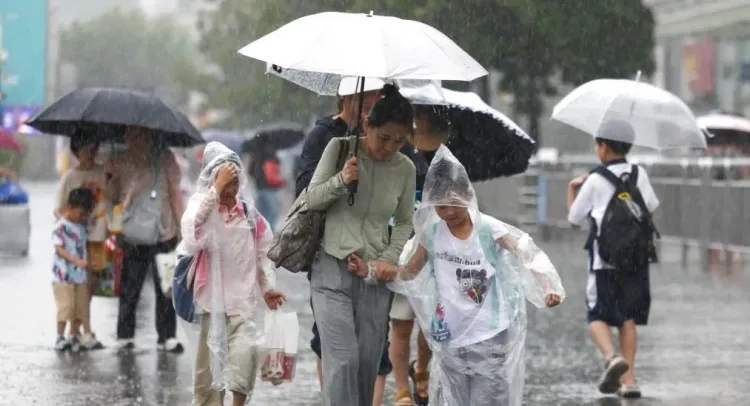Is Emergency Response in Guangdong Ready as Typhoon Podul Approaches?

Synopsis
Key Takeaways
- Guangdong has activated Level-IV emergency response due to Typhoon Podul.
- Maximum wind speeds near Podul's center reach 30 meters per second.
- The typhoon is expected to affect Taiwan and then make a second landfall in eastern China.
- Heavy rainstorms are forecasted for numerous areas in Guangdong.
- China's four-tier emergency system helps manage disaster responses effectively.
Guangzhou, Aug 12 (NationPress) The province of Guangdong in southern China activated a Level-IV emergency response on Tuesday as Typhoon Podul approaches, as reported by the provincial flood control and drought relief headquarters. Podul, marking the 11th typhoon this year, was tracked over the northwest Pacific Ocean at 8 a.m. Tuesday, situated approximately 730 kilometers southeast of Taitung in the Taiwan region, according to the meteorological observatory in Guangdong.
Near the center of Podul, the maximum wind speed reached 30 meters per second, with a central minimum pressure of 980 hectopascals.
Forecasts indicate that the typhoon is likely to make landfall on Taiwan's southeast coast around midday on Wednesday.
It is expected to traverse the island and enter the Taiwan Strait at a lesser intensity, potentially making a second landfall along the coast spanning from the southern regions of east China's Fujian Province to eastern Guangdong between Wednesday night and early Thursday morning.
From Wednesday night through Thursday, Podul is anticipated to bring heavy rainfall across numerous areas in Guangdong, as reported by Xinhua news agency.
China operates a four-tier emergency response system, where Level I represents the highest level of alert.
Previously, on July 30, Typhoon Co-May, the eighth of the year, made its second landfall in east China's Shanghai Municipality after initially making landfall in Zhejiang Province, according to the Shanghai Central Meteorological Observatory.
The center of Typhoon Co-May (at tropical storm level) made landfall on the coast of Fengxian District, Shanghai. At that time, the maximum wind speed was recorded at 23 meters per second, with a central minimum pressure of 978 hectopascals.
To mitigate the effects of the typhoon, Fengxian District had proactively prepared by assessing potential risks and initiating the relocation and resettlement of residents in vulnerable areas.
China has also faced impacts from Typhoon Wipha.
The geographic location of China along the western Pacific Ocean makes it particularly vulnerable to typhoons, as this region serves as a breeding ground for such storms. The country’s extensive coastline, mountainous landscapes, and the ramifications of climate change further intensify the challenges posed by these natural disasters.









